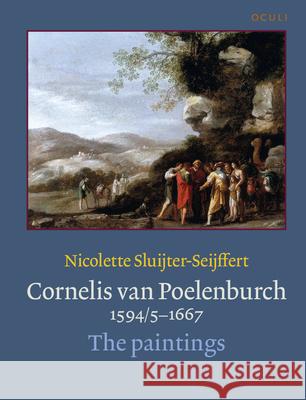Cornelis Van Poelenburch (1594/5-1667): The Paintings » książka
Cornelis Van Poelenburch (1594/5-1667): The Paintings
ISBN-13: 9789027249678 / Angielski
Cornelis van Poelenburch was one of the very few painters of the Dutch Golden Age to acquire international renown during his lifetime. Only three Dutch artists were honoured with mentions by all of the seventeenth-century biographers who included Netherlandish artists, the others being Rembrandt and Gerrit Dou. His paintings were prized by well-to-do and often aristocratic collectors who were willing to pay high prices for them. Grand-Duke Cosimo II de' Medici, for example, kept four of Poelenburch's paintings in his private quarters and Stadholder Frederick Henry and his consort owned more works by him than any other Dutch artist. He was a pupil of the influential Utrecht painter Abraham Bloemaert, worked for eight years in Italy, and except for a period of four years when he lived in London and received an annual stipend from King Charles I, spent the rest of his life in Utrecht.
Poelenburch's idyllic, mostly small-sized landscapes on copper or panel and done in a highly refined style and technique usually feature a 'history' a biblical, mythological or pastoral subject. Nowadays he is known primarily as the leading artist of the first generation of 'Italianate' landscape painters, but in his own time he was lauded mainly for his lively figures with their crisp contours and animated gestures.
From the mid-nineteenth century, Poelenburch's paintings came to be dismissed as 'un-Dutch' and were subsequently neglected and forgotten, together with those of many other seventeenth-century painters who did not fit into the mould of 'Dutch realism'. This first comprehensive monograph on the artist includes a catalogue of his works, along with a discussion of all of his approximately 290 known paintings (all reproduced), and chapters covering his biography, the reception of his art in his own time and in later centuries, and his remarkable position on the seventeenth century art market.











